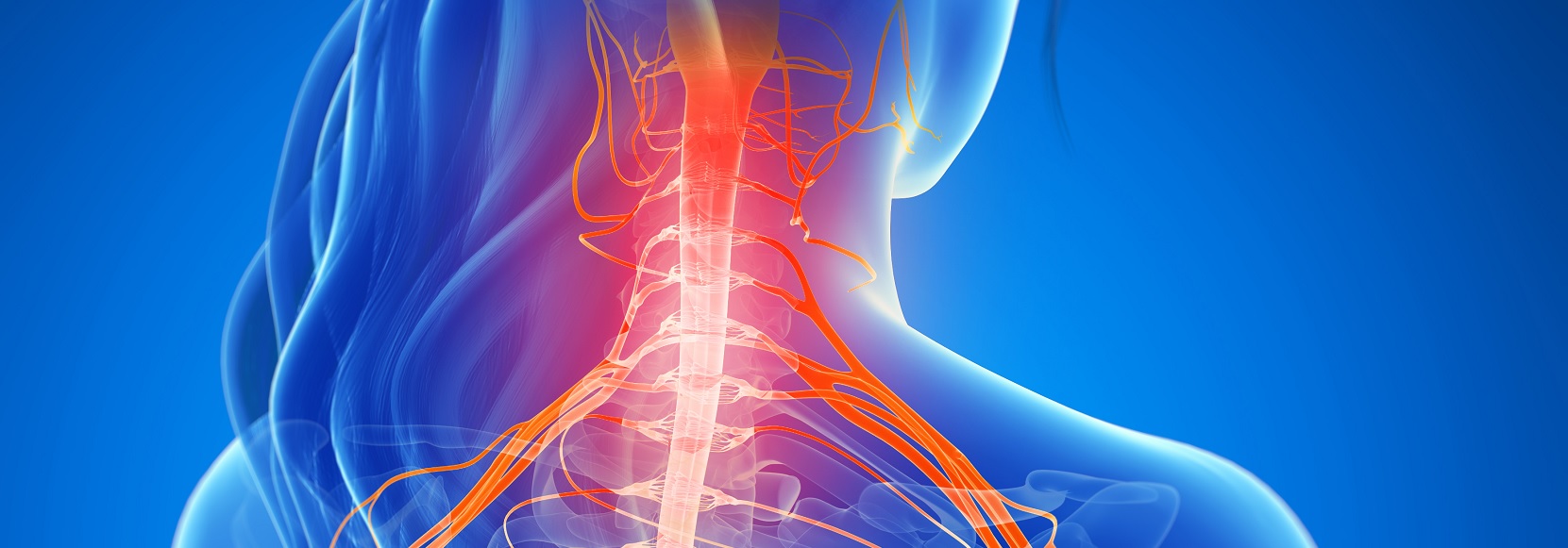Most neck pain is caused by minor injury to the neck’s soft tissues from repeated or prolonged movements. Even poor posture, such as cradling the phone, can cause neck pain.
Neck pain may be caused by:
- An injury causing neck strain and/or sprain, spasm of the muscles, or inflammation of the neck joints.
- Disc degeneration, causing further stress to the spine; or herniated disc putting pressure on the spinal cord or nerve roots.
- Osteoarthritis or spinal stenosis.
- A sudden injury, such as whiplash, a direct blow to the neck, a fall, or a broken or fractured bone of the spine. With a severe injury, a broken or fractured bone could damage the spinal cord and lead to paralysis or death.
- An illness, such as the flu or inflammation of the brain and spinal cord (meningitis).
Call us TODAY to schedule a FREE consultation!
Other causes include:
- Torticollis, also called wry neck, usually caused by muscle spasm.
- Infection or tumor in the neck area.
- Muscle tension.
- Temporomandibular joint (TMJ) disorder.

A muscle strain, also known as a pulled muscle, may be minor (such as an overstretched muscle) or severe (such as a torn muscle or tendon). Strains are caused by overstretching muscles.
Symptoms of a muscle strain can vary, depending on how severe the strain is, and may include:
- Pain and tenderness that is worse with movement.
- Swelling and bruising.
- Normal or limited muscle movement.
- A bulge or deformity at the site of a complete tear.
Recovery time for a muscle strain can vary, depending on a person’s age and health and the type and severity of the strain. While a minor strain often heals well with home treatment, a severe strain may require medical treatment. If a severe strain is not treated, a person may have long-term pain, limited movement, and deformity.
Sprains are injuries to the tough ropelike fibers (ligaments) that connect bone to bone. If you have a severe sprain, your symptoms may not be much different from those you would have with a broken bone. Health professionals rank sprains by degree of severity.

A first-degree sprain stretches the ligaments but does not tear them. Signs and symptoms may include:
- Mild to moderate swelling and pain.
- A stable joint that does not feel loose or wobbly.
- Normal movement.
A second-degree sprain partially tears the ligaments. Signs and symptoms may include:
- A pop or snap felt or heard at the time of the injury.
- Moderate to severe pain and swelling.
- Restricted movement.
- Mild to moderate instability and Bruising.
A third-degree sprain completely tears the ligaments. Signs and symptoms may include:
- A pop or snap felt or heard at the time of the injury.
- Mild to severe pain (pain is sometimes less in a complete tear than in a partial tear).
- Severe swelling and bruising (often, but not always).
- An unstable joint (feels wobbly or loose) with a grating sound or feeling.
- A change in sensation, such as numbness or tingling to the arms.

Recovery time for a sprain can vary, depending on a person’s age and health and the severity of the sprain. A minor sprain in a healthy person may heal in a few days to a few weeks. A severe sprain can take several months to heal and may never heal completely, resulting in long-term pain, limited movement, deformity and instability of the joint, and repeated injuries.
First aid for a sprain includes rest (immobilization), ice, compression, and elevation. While a minor sprain will often heal well with home treatment, a moderate to severe sprain may require medical treatment, such as a cast or splint, physical therapy, medication, or surgery.
Inflammation may result in pain, swelling, redness, warmth, or loss of function of the affected body part. This is particularly true with the nerves of the neck which can be compressed irritating leading to inflammation. Nerve compression or inflammation can be the result of a disc herniation or compression from an arthritic bone that has encroached the space through with the neck nerves travel.
Call us TODAY to schedule a FREE consultation!

